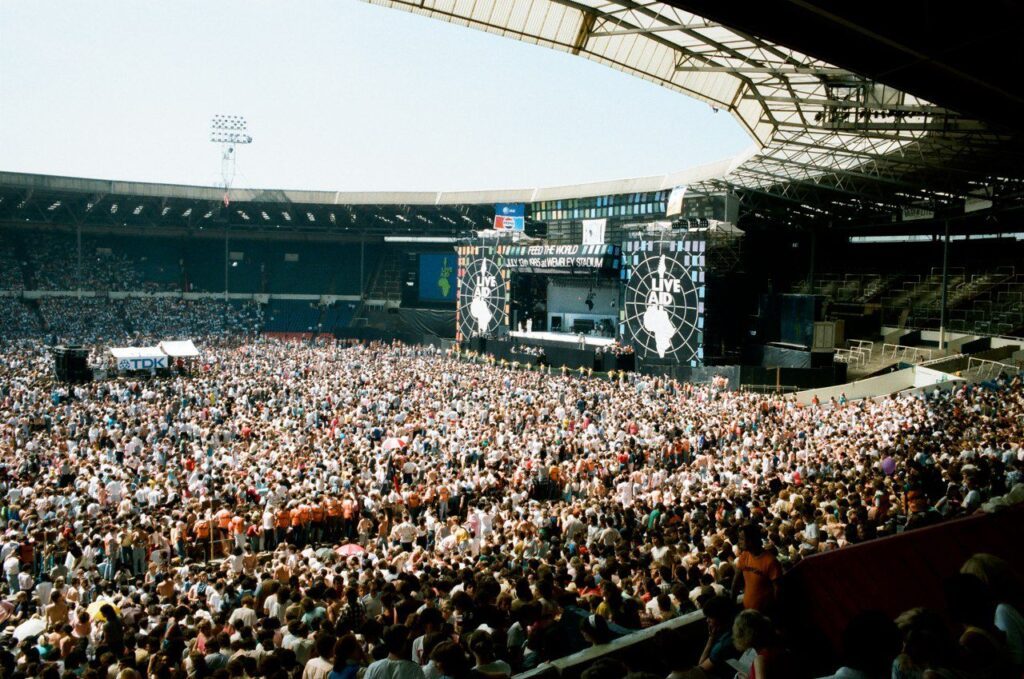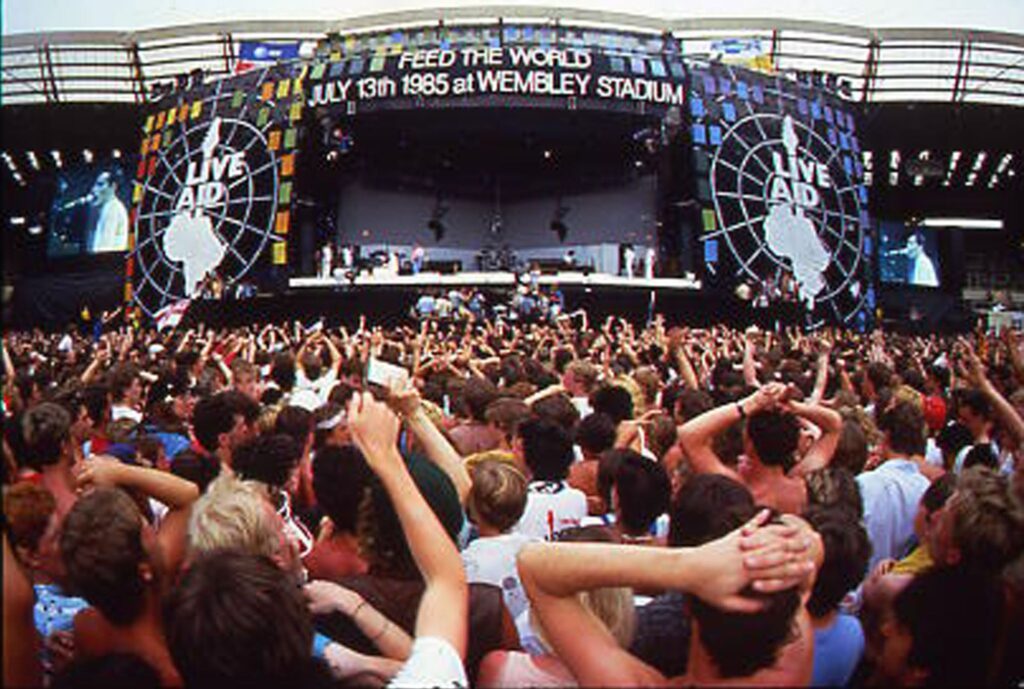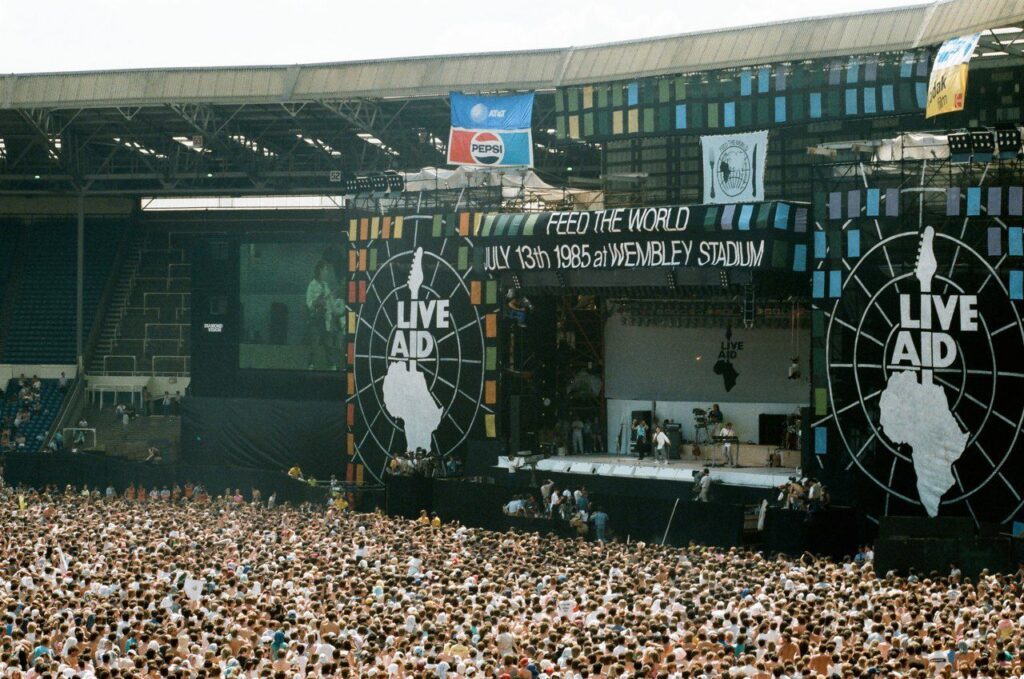
Looking back: 40 years on from Live Aid
Looking back: 40 years on from Live Aid
Forty years ago this week, a team working under the Edwin Shirley name was on site at Wembley Stadium, having just completed the stage build for Bruce Springsteen’s concert. Before they had a chance to rest, they were asked to stay on for ‘some sort of charity show’ (little did they know). The brief was to redesign and rebuild the stage to accommodate a series of artists performing over a 16-hour charity concert broadcast on 13 July 1985. At the time, no one could quite believe something like this could happen. The build-up was sometimes disorganised and chaotic, leaving many to wonder if it would even go ahead. The in true rock ‘n’ roll style the crew just got on with it.
Within a week, a new design was drawn up and transformed into the Live Aid stage, a platform that would soon become a landmark in music history. From their vantage point near the front-of-house mixer, the team looked out over a crowd that stretched from the stage to the very back of Wembley’s pitch. It became clear that this was something far greater than a job—a truly special moment was unfolding.
Staging a live international broadcast of this scale on such short notice, without the advanced technology and logistics available today, was almost unimaginable. The event came together not through layers of commercial infrastructure or corporate oversight, but through the determination and collaboration of people across the live events industry. Live Aid wasn’t about profit. No one was paid and there was no bureaucratic process. Instead, it was driven by urgency, belief, and the energy of people committed to making something remarkable happen.
The concert featured legendary artists such as David Bowie, Queen, and Elton John, alongside many others, each contributing to an unforgettable day of music and global solidarity. This spirit of collective purpose remains a defining moment in live entertainment history. Lighting, sound, staging, video, artists, and crew all united in pursuit of a cause greater than any individual. Live Aid laid the foundation for future large-scale charitable events such as Comic Relief and Sport Aid, showing the world that live performance could do more than entertain, it could inspire real change.
That legacy continues today. ES GLOBAL was proud to build the stage for Black Sabbath’s final performance, another historic show that raised funds for Birmingham Children’s Hospital, Cure Parkinson’s, and Acorns Children’s Hospice. To have been part of an event that changed music, broadcasting, and charitable giving is a source of great pride. Although few from that original crew remain in the industry, their work and its impact continue to resonate.


